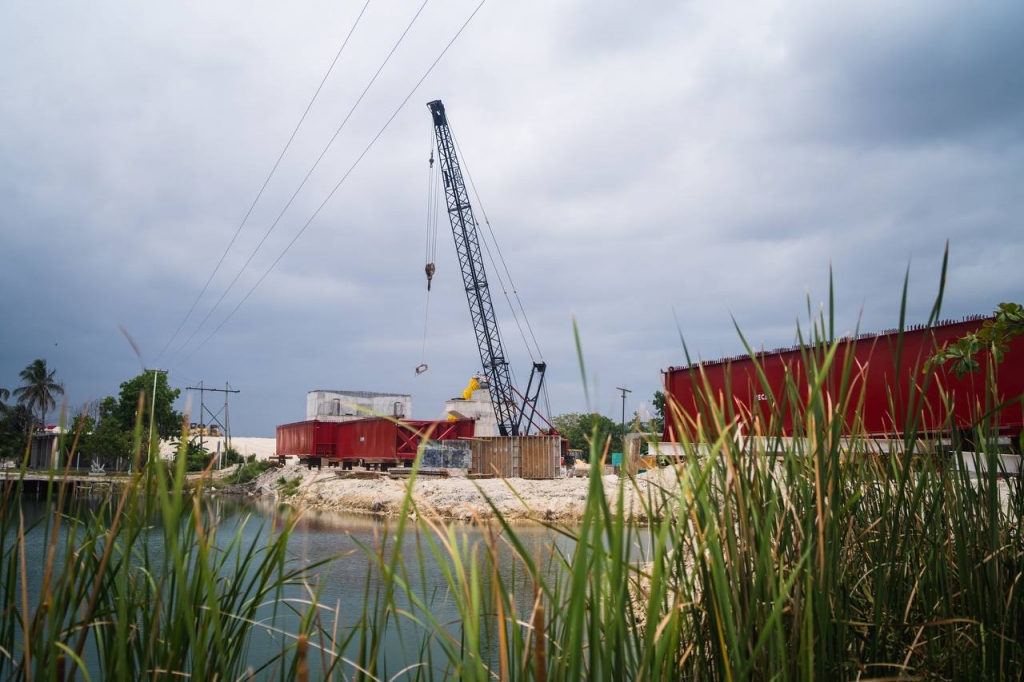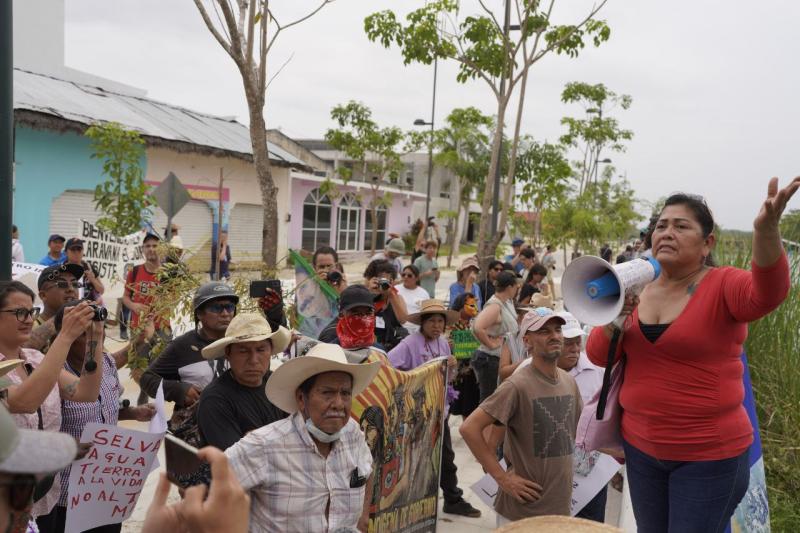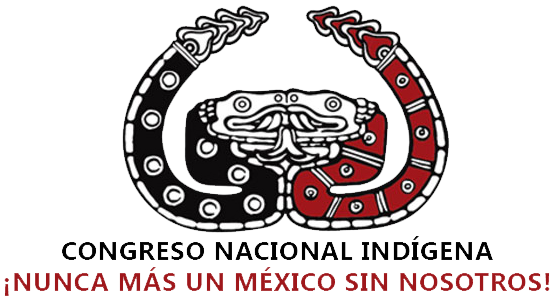On day 6 of the Caravan El Sur Resiste, we arrived at the town of Candelaria, Campeche, one of the communities where the Tren Maya will pass and have a station; and where the construction of the new roads are already underway.
This is what the main streets looked like, red steel beams covering almost the entire street while the houses in the municipality look small next to the monstrous project of death.
The day began with a welcome ritual, where Bety Cariño was remembered, and where Mother Earth was thanked for accompanying us. At the same time, we asked for strength to continue defending life in a country where death continues to be produced through capitalism and the power of bad governments.
The girls and boys who are part of the caravan lit the fire of the ritual. Today we also celebrate their resistance, and we remember that the fight is also for them to have a future on this planet.

The day continued with the testimonies of the inhabitants of La Candelaria. They explained the effects that the construction of the wrongly named Maya Train has generated in their community:
- Forced evictions: at least 300 houses have been evicted since the project was announced in this community; Many of the families who did not want to sell their homes were harassed and pressured to accept monetary compensation.
- Stomach and respiratory diseases: members of the community talked about an increase in diseases since the construction of the Train began, which they attribute to worse water quality, and constantly breathing materials and substances used in construction. In fact, it is easy to notice how a white layer of dust that quickly sticks to clothing and the body covers the entire enclosure due to its proximity to the building.
- Community division: the project has caused more divisions in Candelaria between the people who support the project because of the false economic benefits that the Mexican government has announced, and the people who oppose its construction because of the environmental and social destruction it will bring with it.
- Loss of bodies of water: one of the most serious effects of the project is the filling and building of a bridge that blocks part of the clean water river that crosses the community. The community also mentions that wetlands within the community have also been filled in to continue with the construction of the death train.

After listening to the words of the compañeras and compañeros from Candelaria, and other compañeros from the communities that are part of the caravan, we took to the streets and shouted together, “This Train is not Maya, this train is military!”
We walked the streets, some people in the community were uncomfortable with our presence, “we want progress,” some shouted. The divisions created by the president’s discourse and his institutions such as FONATUR are palpable in this community.
Almost at the end of the march, we reached the river, on the left side it looked wide and impressionable, it seems to have no end and is surrounded by trees and nature; on the right side it has been covered by gravel and earth, only 10 meters have been left for the water to continue circulating; there are no trees anymore, just piles of dirt and a yellow bulldozer that pushes dirt non-stop.
A colleague from the community took the megaphone and asked us to observe and document the destruction of the river. The death that the misnamed Mayan Train brings with it is increasingly notorious in all places where its construction continues despite the multiple protections that have been ignored, violating the country’s constitution and the laws that the bad government requires the people to respect, but not to companies.
The compañera also mentions that the works related to the river were never consulted with the community, and the environmental impact statement simply does not exist. A violation to the right to information, to the consultation of the original peoples, and to Mexican laws.
After the march, the caravan left for Valladolid. We follow the deadly route of the Train with the clear objective of making visible the destruction it is generating, but also to give voice to the resistance of people in communities like Candelaria who refuse to be silenced, and who continue to fight to defend life.



